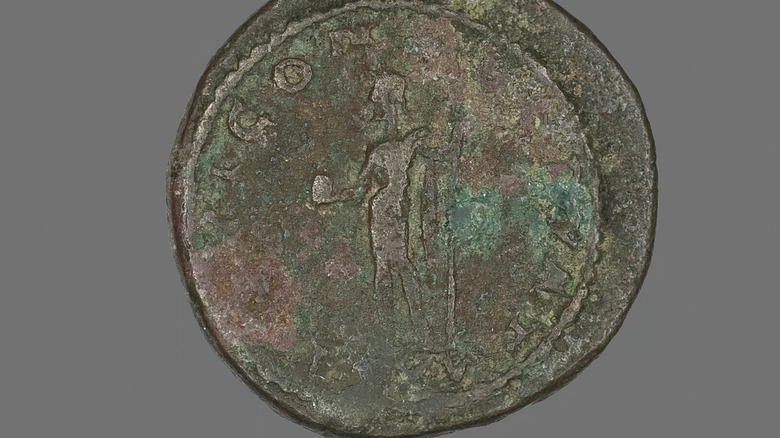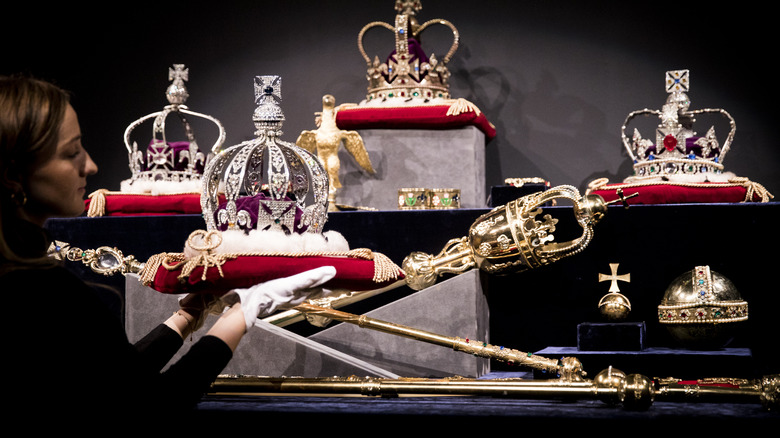What Were Scepters Really Used For?
The elite of ancient cultures often carried a scepter (also spelled sceptre) to show their power and authority. These elongated sticks or wands could be simple wooden rods or feature ornate designs, bedecked with precious metals and jewels. The Mesopotamian god of the fresh waters, Ea, had a scepter with a ram's head (per Mesopotamia). Zeus, the king of all Grecian deities, became known for his fierce lightening bolt and his royal scepter that sometimes featured a perched eagle, said Britannica. Hades, god of the dead, also carried a powerful scepter that could open a passage between the lands of the living and the dead, said Theoi. In fact, many Greek deities had some sort of staff.
In ancient Egypt, Set (the god of chaos, desert, and war), Anubis (god of the dead), and pharaohs and priests equipped themselves with a scepters as well. The rod not only indicated their status, but many believed it contained magic and bonded the living realm with the underworld, said Egypt Tours Portal.
Others besides heavenly rulers used scepters, including military leaders, religious figures, judges, and royalty. By the 10th century, European kings were consecrated with two staffs, according to another Britannica article. Eventually, most countries replaced one of the sticks with an orb, a sphere that symbolized the cosmos. Just England kept the two rods, but distinguished them by topping one with a cross and the other with a dove.
Crown jewels with a bit of bling
The English monarchy still uses the orb and the scepter for every coronation ceremony, and both objects have a long history. The Sovereign's Orb, for instance, is considered part of the Royal Crown Jewels and symbolizes "Christ's dominion over the world," according to The Crown Chronicles. The piece, created for King Charles II's coronation in 1661, consists of a hollow gold sphere encrusted with nine sapphires, nine emeralds, 18 rubies, 365 diamonds, 375 pearls, one amethyst, and one glass stone. The whole thing weighs about 43 ounces. The Sovereign's sceptre is one of two used during the ceremony, and it represents the King or Queen's power and good governance. This staff contains the largest diamond in the world. It has two names: the Cullinan I, or the First Star of Africa. In 1907 the sparkler was given to Edward VII, son of and successor to Queen Victoria, two years after it was discovered in South Africa. Eventually, it was cleaved into nine parts, with the biggest one (at 530 carats) put atop the scepter in 1910. The gold rod made its first coronation appearance at King George V's ceremony in 1911.
When not crowning sovereigns, such Coronation Regalia can be seen at the Jewel House in the Tower of London, according to Historic Royal Palaces. More than 30 million people have seen the exhibit.

